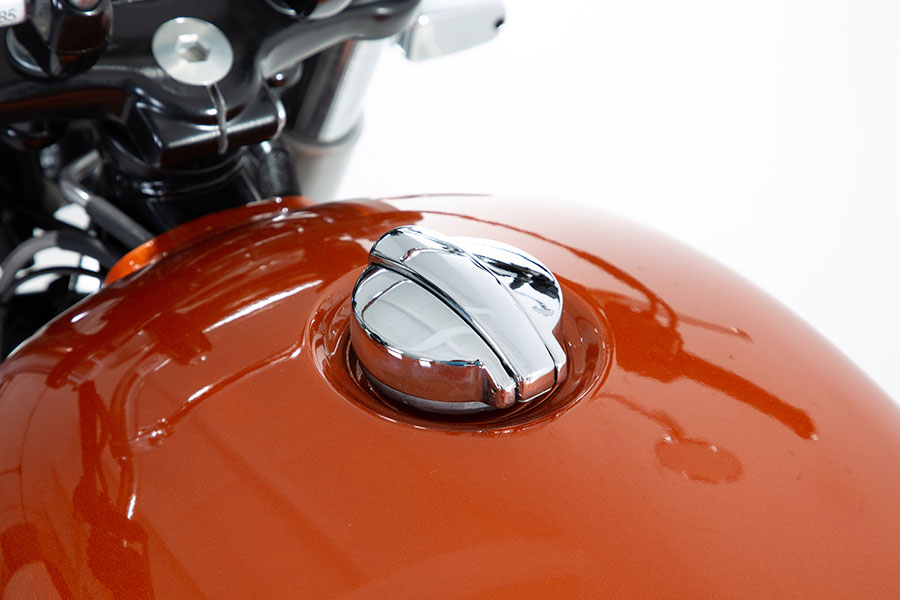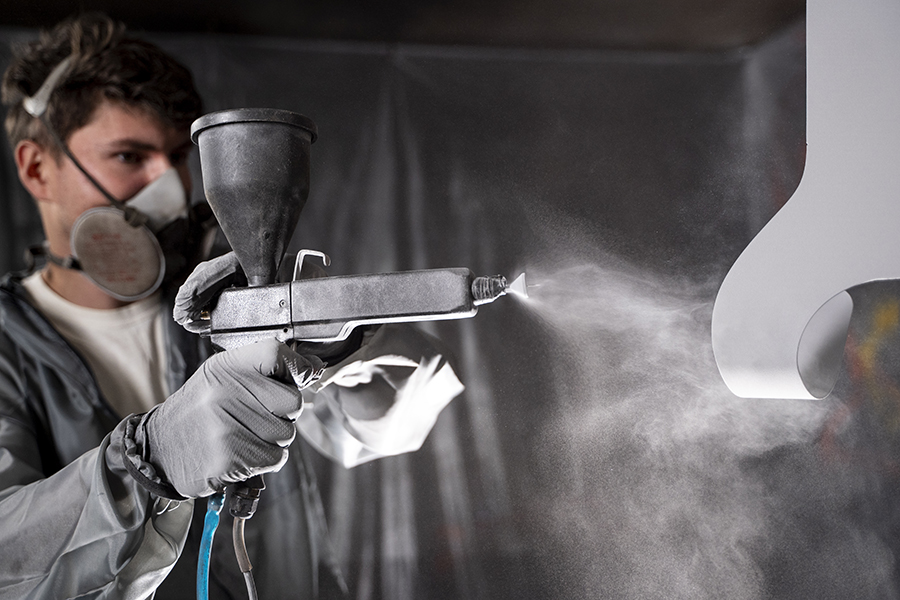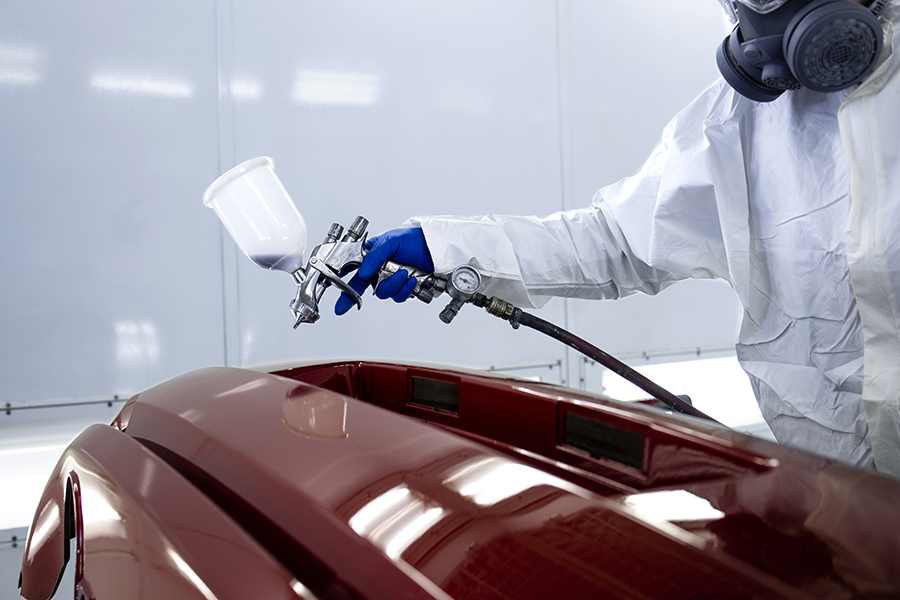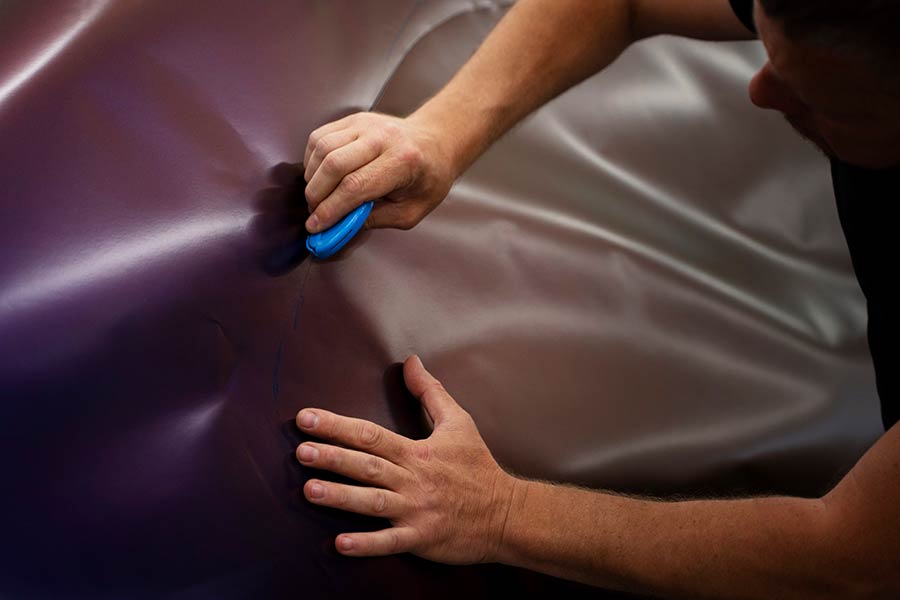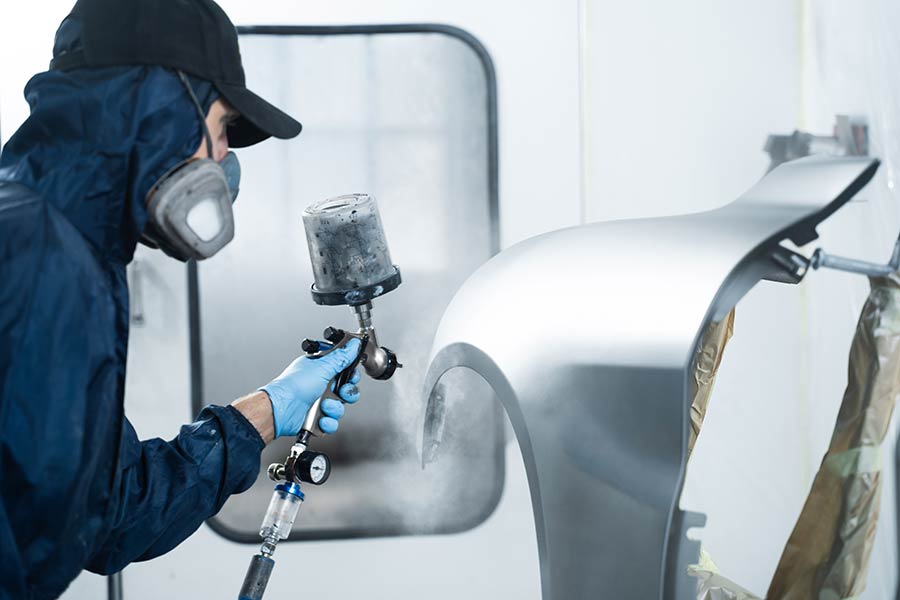Did you know 75% of motorcycles are repainted within their first five years? Choosing the right motorcycle body paint isn't just about slapping on your favorite color. It's an art and science that transforms your ride into a statement. Whether you're aiming to turn heads with a vibrant hue or want a sleek, classic look, understanding the essentials of motorcycle body paint can make all the difference. From selecting the perfect shade to ensuring it stands the test of time, let's dive into what makes for a stunning finish that reflects your personal style.
Key Takeaways
-
Getting your motorcycle professionally painted can protect it and make it look great. Choose a pro for the best results.
-
There are different types of paint jobs. Know what you want before you pick a painter.
-
When selecting a painter, look for someone with good reviews and a portfolio of their work.
-
The cost of painting your motorcycle can vary. It depends on the type of paint job and the painter you choose.
-
Prepare your motorcycle before painting. This can help ensure the paint sticks and looks good.
-
After painting, take care of your motorcycle's new paint. Follow the painter's advice for the best results.
-
Check if your insurance covers the paint job. It's good to know before you start.
Benefits of Professional Paint
Enhanced Aesthetics
A fresh coat of paint can transform a motorcycle like nothing else. It's not just about covering up scratches or fading; it's about giving the bike a new life. Color plays a huge role in this transformation. It allows riders to personalize their bikes, making them stand out on the road.
Different finishes, like matte, gloss, and metallic, further enhance the bike's aesthetics. They can change how the color looks under different lights and from various angles. This variety lets owners choose exactly how they want their motorcycle to look and feel.
Durability
High-quality paint isn't just for show. It also protects the motorcycle from the elements. A good paint job includes a protective top coat that makes it last longer. This layer helps the bike withstand sun, rain, and even small impacts without chipping or scratching.
Durable paint also resists damage from road debris. Stones and gravel can leave marks on lower-quality paints, but professional-grade materials are much tougher. They keep the motorcycle looking new for years.
Protection
Paint does more than make a motorcycle look good. It acts as a barrier against rust and corrosion. Proper application is key here. If done right, paint seals off the metal body from air and moisture, which cause rust.
UV-resistant paint helps prevent color fading from sunlight exposure. This keeps the bike looking vibrant and new for longer periods.
Resale Value
A well-maintained paint job can significantly increase a motorcycle's resale value. Popular colors tend to appeal more to potential buyers, making them willing to pay extra.
Professional paintwork stands out in the resale market. It shows that the bike was cared for properly, making it more attractive to buyers looking for quality.
Paint Job Types
Basic Overview
Motorcycle paint jobs start with choosing the right type of paint. Urethane and acrylic are popular choices. Each has its benefits, like durability and color options. The painting process involves several steps. It starts with prep work, moves to applying a base coat, then layers of paint, and ends with a clear coat for protection. Tools needed include sprayers, sanders, and safety gear. A dust-free environment is crucial for a smooth finish.
Custom Options
For those wanting a unique ride, custom paint options abound. You can choose from various graphics and decals to add personality. Mixing custom colors lets riders create a look that's all their own. A growing trend is adding personal or brand logos into the design. This customization makes each motorcycle stand out.
Environmental Impact
Eco-friendly paint options are available too. These paints have low VOCs, making them better for the planet. It's important to dispose of paint materials properly to avoid harming the environment. The painting industry is making strides in sustainable techniques. This means less waste and fewer harmful chemicals.
Selecting a Painter
Assessing Quality
To ensure your motorcycle looks its best, assess the quality of a paint job before choosing a painter. Look for an even coating and smooth edges, signs of professional workmanship. A high-quality job will have no drips or inconsistencies in color. Red flags like bubbling or peeling indicate a poor paint job. These flaws can quickly ruin the appearance and decrease your bike's value.
Skilled Professionals
Choosing experienced painters is crucial for quality results. Specialists in motorcycle body paint bring expertise that general painters might not have. They know how to handle the curves and details of different bikes. Look for certifications or qualifications showcasing their skills. Hiring a specialist, especially for custom paintwork, ensures your motorcycle stands out with a professional finish.
Understanding Costs
The cost of painting a motorcycle varies widely. It depends on several factors, including the size and complexity of the design. Standard paint jobs are generally less expensive than custom ones due to the extra time and skill required for unique designs. Always discuss your budget and expectations upfront to avoid surprises.
Cost Factors Explained
Bike Size Impact
The size of the motorcycle plays a big role in painting costs. Bigger bikes need more paint and time to cover every inch. This means higher expenses for larger models. Small bikes, on the other hand, use less material but might have intricate parts that are tricky to paint. These details can add up, making even small projects costly.
Additional Services
Many paint shops offer services beyond just adding color. These can include:
-
Dent repair
-
Part replacement
-
Custom designs
Combining paintwork with these tasks can save time and money. It also boosts the bike's look and value. Think about getting all your maintenance done at once. It's a smart move.
Average Costs
Painting a motorcycle can cost anywhere from $300 to over $1,500. Prices vary based on where you live and the shop's reputation. High-end jobs might include custom artwork or premium paints. To save money without losing quality, ask about different paint options. Also, consider timing your project during off-peak seasons.
Preparing Your Motorcycle
Pre-Paint Steps
Before you start painting your motorcycle, there are a few key steps you need to take. First, clean your bike thoroughly. Dirt and grease can prevent paint from sticking properly. Next, sand the surface. This helps the new paint adhere better.
It's also crucial to remove or mask parts that you don't want painted. Overspray can be hard to clean and might ruin the look of your bike. Finally, applying primer is essential. It ensures the paint sticks well and lasts longer.
DIY vs Professional
Pros and Cons
Choosing between a DIY project and hiring a professional depends on several factors. A new paint job can significantly improve your motorcycle's appearance and protect its surface. However, it can be costly and means you won't be able to use your motorcycle for a while.
Doing it yourself might save money, but it requires time, skill, and patience. On the other hand, professionals guarantee quality but at a higher cost. Before deciding, consider these pros and cons carefully.
Painting Process
Steps Involved
After preparing your motorcycle for a new coat of paint, the actual painting process begins. This journey transforms your bike from plain to extraordinary. It involves several key steps.
First, a primer is applied to ensure the paint sticks well and lasts longer. This step is crucial for a smooth finish. Next, the base coat goes on. This is the main color of your motorcycle. Professionals often apply multiple layers to achieve deep, vibrant colors.
Then, if desired, graphics or designs are carefully added. This requires precision and creativity. Lastly, a clear coat seals everything in. It protects against scratches and UV damage.
The whole process can take anywhere from a few days to two weeks. It depends on the design's complexity and drying times between coats.
Quality Work Standards
A high-quality motorcycle paint job shines through its attention to detail at every stage. From prep work to finishing touches, nothing should be overlooked.
Prep work must be thorough. Any imperfections here will show up in the final product. During painting, using top-grade materials ensures rich colors and durability. The clear coat needs to be applied evenly for protection and shine.
Adhering to these standards not only makes your motorcycle look stunning but also guarantees satisfaction with its lasting beauty.
Post-Paint Care
Maintenance Tips
After giving your motorcycle a fresh coat of paint, it's crucial to keep it looking new. Regular washing is essential. Use mild soap and water to gently remove dirt without scratching the surface. Waxing adds an extra layer of protection, making the paint more resistant to environmental damage.
Storing your motorcycle in a garage or under a cover protects the paint from sun damage and weather wear. It's also important to know what products to avoid. Harsh chemicals and abrasive cleaners can strip away the paint's shine and even cause peeling over time.
Appearance Longevity
To ensure your motorcycle's paint stays vibrant, adopting certain practices is key. Applying a protective coating can shield the paint from UV rays, small scratches, and dirt. This helps maintain the color's depth and shine for years.
Regular maintenance plays a significant role in preventing paint degradation. By keeping the surface clean and protected, you reduce the risk of rust and fading. This not only keeps your motorcycle looking great but also supports its overall value.
Insurance and Painting
Considerations
Before you decide to give your motorcycle a fresh coat of paint, there are several factors you must consider. Budget is crucial. Know how much you can spend on this project. It's not just about the cost of the paint but also labor fees if you're hiring a professional.
Choosing the right color is another significant decision. It should reflect your personality but also be practical. Remember, certain colors might affect your bike's visibility on the road.
It's important to review the painter's previous work before making a choice. Their portfolio can give you insight into their skill level and style compatibility with what you envision for your motorcycle.
Consider how you use your bike and where it spends most of its time. If it's often exposed to harsh weather, choose a paint type that can withstand those conditions. This ensures your paint job lasts longer and remains vibrant.
After deciding on painting, remember to think about post-paint care, as discussed in the previous section. The right choices here can extend the life of your new paint job significantly.
Final Remarks
ou've got the scoop on turning your motorcycle from blah to wow with a fresh coat of paint. From choosing the right painter to aftercare, it's all about making smart moves to ensure your ride turns heads for the right reasons. Remember, a top-notch paint job not only boosts your bike's look but also its value and your pride in it. It's like giving your two-wheeled buddy a new lease on life!
Now's the time to rev up and make it happen. Don't let your motorcycle blend into the background. Pick a color that screams 'you' and get that paint job rolling. And hey, while you're at it, why not share your journey? Snap some before-and-after shots and tag us. Let's show off that transformation together! Ready, set, paint!
Frequently Asked Questions
What are the benefits of getting a professional paint job on my motorcycle?
Professional paint jobs ensure durability, a flawless finish, and can significantly boost your bike's aesthetic appeal. It's like giving your motorcycle a spa day, but instead of coming out relaxed, it comes out looking brand new.
How do I choose the right painter for my motorcycle?
Select a painter with experience, great reviews, and a portfolio that matches your style. It's like picking a tattoo artist; you want someone who gets your vibe and can bring your vision to life.
What types of paint jobs are available?
There are various options from basic single colors to intricate custom designs. Think of it as choosing an outfit for your bike; whether it wants to dress in a sleek black suit or a flamboyant carnival costume is up to you.
How much does a motorcycle paint job cost?
Costs vary widely based on design complexity and quality. It's akin to dining out; you could go for fast food prices or splurge on a fine dining experience. Expect anything from a few hundred to thousands.
What should I do to prepare my motorcycle for painting?
Clean it thoroughly and remove any parts that won't be painted. It’s like prepping for surgery; the cleaner and more prepared it is, the smoother the operation will go.
Can you explain the painting process briefly?
After prep, primer is applied, followed by the base coat, then the design layer if applicable, and finally sealed with a clear coat. Think of it as layering up in winter - each layer serves its purpose.
How do I care for my motorcycle’s new paint job?
Keep it clean, avoid harsh chemicals, and wax regularly. Treat it like protecting your skin from sunburn; gentle care goes a long way.
Does insurance cover motorcycle painting?
It depends on your policy and why it needs painting. If it’s due to an accident, probably yes; if it's just for aesthetics, likely no. Imagine insurance as health coverage; cosmetic changes aren’t usually included unless medically necessary.
